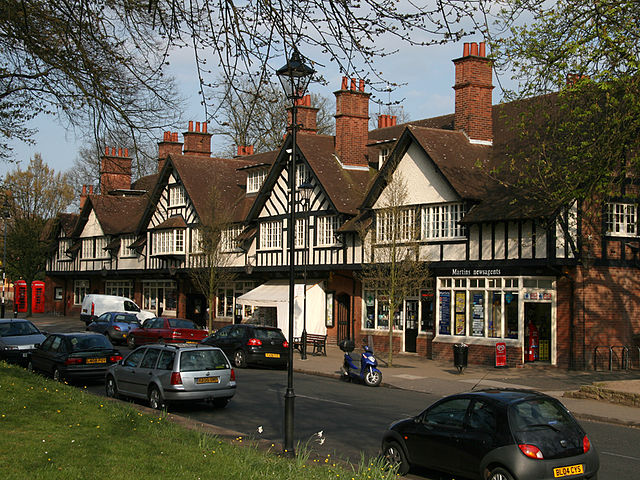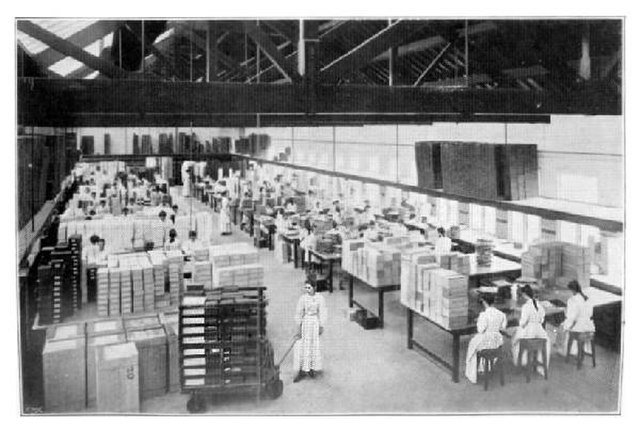Bournville is a model village on the southwest side of Birmingham, England, founded by the Quaker Cadbury family for employees at its Cadbury's factory, and designed to be a "garden" village where the sale of alcohol was forbidden. Cadbury's is well known for chocolate products – including a dark chocolate bar branded Bournville. Historically in northern Worcestershire, it is also a ward within the council constituency of Selly Oak and home to the Bournville Centre for Visual Arts and the Cadbury's chocolate factory. Bournville is known as one of the most desirable areas to live in the UK; research by the Joseph Rowntree Foundation in 2003 found that it was "one of the nicest places to live in Britain".
The shops around The Green
The packing room at Bournville, circa 1903
Rowheath lake with pavilion in the background
Bournville Rest House was built to celebrate the Silver Wedding Anniversary of George and Elizabeth Cadbury, and was paid for by the employees of Cadbury Brothers Ltd. The design is by William Alexander Harvey, who was architect of many of the buildings on the estate and is based on the 17th century Yarn Market in Dunster, Somerset. Currently, the building houses the Visitors Centre for the Carillon.
A model village is a type of mostly self-contained community, built from the late 18th century onwards by landowners and business magnates to house their workers. Although the villages are located close to the workplace, they are generally physically separated from them and often consist of relatively high-quality housing, with integrated community amenities and attractive physical environments. "Model" is used in the sense of an ideal to which other developments could aspire.
Almshouses in Saltaire, Yorkshire, typical of the architecture of the whole village
An example of houses at Port Sunlight.
Typical local shopping parade in Bournville village
Almshouses at Ripley Ville, Yorkshire. Built 1881 and now the only remaining example of the architecture of the village







